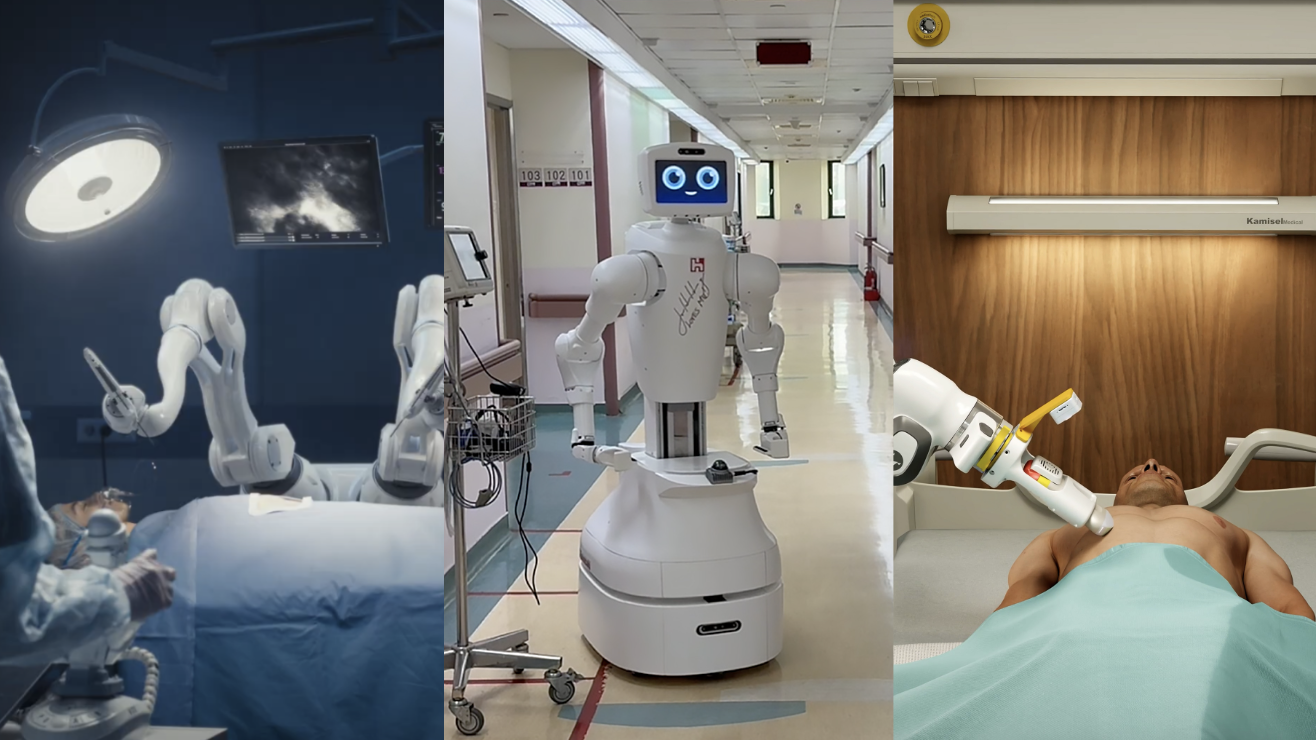Blog
Driving AI-Powered Robotics Development with NVIDIA Isaac for Healthcare

Introduction to AI-Powered Robotics in Healthcare
The intersection of artificial intelligence and robotics is reshaping various sectors, with healthcare standing out as a significant beneficiary. The integration of AI-powered robotics can enhance patient care, streamline complex tasks, and improve overall operational efficiency in medical facilities. One prominent platform leading this evolution is NVIDIA Isaac.
Understanding NVIDIA Isaac
NVIDIA Isaac is a robust platform designed to streamline the development of AI-based robotics applications. Comprising a dedicated software suite and hardware system, Isaac enables developers and researchers to create, simulate, and deploy intelligent robotic systems. Its focus on real-time, AI-driven applications makes it a vital tool for the healthcare sector.
Key Features of NVIDIA Isaac
-
Simulation Environment: Isaac offers a high-fidelity simulation environment that allows users to create realistic scenarios for robotics applications. This feature is crucial in healthcare, where real-world testing can be costly and time-consuming.
-
Powerful AI Capabilities: Leveraging NVIDIA’s advanced graphics processing units (GPUs), Isaac provides powerful AI-tools that support deep learning, computer vision, and natural language processing. These capabilities empower robots to analyze data and make decisions in real time.
- Modular Architecture: This platform offers a modular architecture that supports various robotic applications. This flexibility means that developers can design custom solutions tailored to specific healthcare needs, such as surgical assistance or rehabilitation.
Applications of AI Robotics in Healthcare
The application of AI robotics in healthcare is broad and transformative. Here are some key areas where AI-powered robotics are making significant impacts.
Surgical Assistance
Robotic surgical systems, bolstered by AI, allow for enhanced precision and control during procedures. These systems can assist surgeons in performing complex surgeries with greater accuracy, leading to improved patient outcomes. The ability to simulate surgeries in the NVIDIA Isaac environment enables developers to refine robotic functionalities before deploying them in real-world situations.
Patient Care and Monitoring
AI-powered robots can assist in patient care, offering companionship and monitoring vital signs. These robots can alert healthcare professionals to changes in a patient’s condition, allowing for timely intervention. For instance, robots equipped with machine learning algorithms can analyze patterns in patient behavior, providing insights into their health status.
Rehabilitation Support
Robotic systems are increasingly used in rehabilitation settings. AI-powered exoskeletons and assistive robots enable patients to regain mobility post-surgery or injury by providing personalized support during physical therapy. The adaptability of these robotic systems, supported by the NVIDIA Isaac platform, allows developers to tailor rehabilitation programs based on real-time patient feedback.
Inventory Management
In healthcare facilities, efficient inventory management is crucial. AI-powered robots can streamline inventory tracking and management, reducing the risk of stockouts or overstock situations. By automating these tasks, healthcare organizations can focus more on patient care while maintaining operational efficiency.
Enhancing Training and Education
AI-powered robotics not only transform patient care but also play a vital role in training healthcare professionals. Simulation technologies powered by NVIDIA Isaac enable medical students and professionals to practice surgical procedures and robotic technology operation in a risk-free environment. This hands-on experience can significantly enhance their skills and confidence.
Creating Realistic Training Scenarios
By utilizing realistic simulations, medical trainees can experience various surgical scenarios and patient interactions. This immersive training method, enhanced by AI, prepares healthcare professionals for real-life challenges. As a result, it contributes to overall better patient outcomes and reduces the likelihood of medical errors.
The Future of AI Robotics in Healthcare
As technology continues to evolve, the potential for AI-powered robotics in healthcare is immense. Key trends shaping this future include:
Integration with Telemedicine
The rise of telemedicine has opened avenues for AI-driven robots to assist healthcare providers in remote consultations and diagnostics. Combining robotics with telemedicine can enhance patient engagement and increase access to care, particularly in rural areas.
Personalized Medicine
AI’s capacity for data analysis allows for the development of personalized medicine approaches. Robots can gather and analyze patient data, enabling healthcare providers to tailor treatments based on individual needs and responses.
Ethical Considerations
With the burgeoning integration of robotics in healthcare, it is essential to address ethical considerations. Discussions around patient privacy, consent, and the implications of automated decision-making are paramount. Establishing clear guidelines and ethical standards will ensure responsible and beneficial use of AI-powered robotics.
Challenges to Overcome
While AI robotics offer remarkable advantages, there are challenges that developers and healthcare professionals must address:
Technical Complexity
The integration of AI and robotics involves complex technologies that require specialized knowledge to implement effectively. Bridging the gap between technical expertise and healthcare applications remains a challenge.
Regulatory Hurdles
Navigating the regulatory landscape for robotic technologies in healthcare can be intricate. Establishing clear guidelines for the deployment of AI-driven systems is essential to ensure safety and compliance.
Resistance to Adoption
Cultural resistance to adopting new technologies can slow down the implementation of AI robotics in healthcare. Providing education and demonstrating the tangible benefits of these systems can help shift mindsets.
Conclusion
The integration of AI-powered robotics into healthcare is creating a transformative shift in how medical professionals provide care. The NVIDIA Isaac platform stands at the forefront of this revolution, providing essential tools for developers to create innovative solutions. While challenges persist, the potential benefits—ranging from enhanced surgical precision to improved patient monitoring and education—are vast. As the healthcare sector continues to embrace this technology, the focus should remain on ethics, training, and collaboration to ensure that AI robotics serve the best interests of patients and providers alike.
